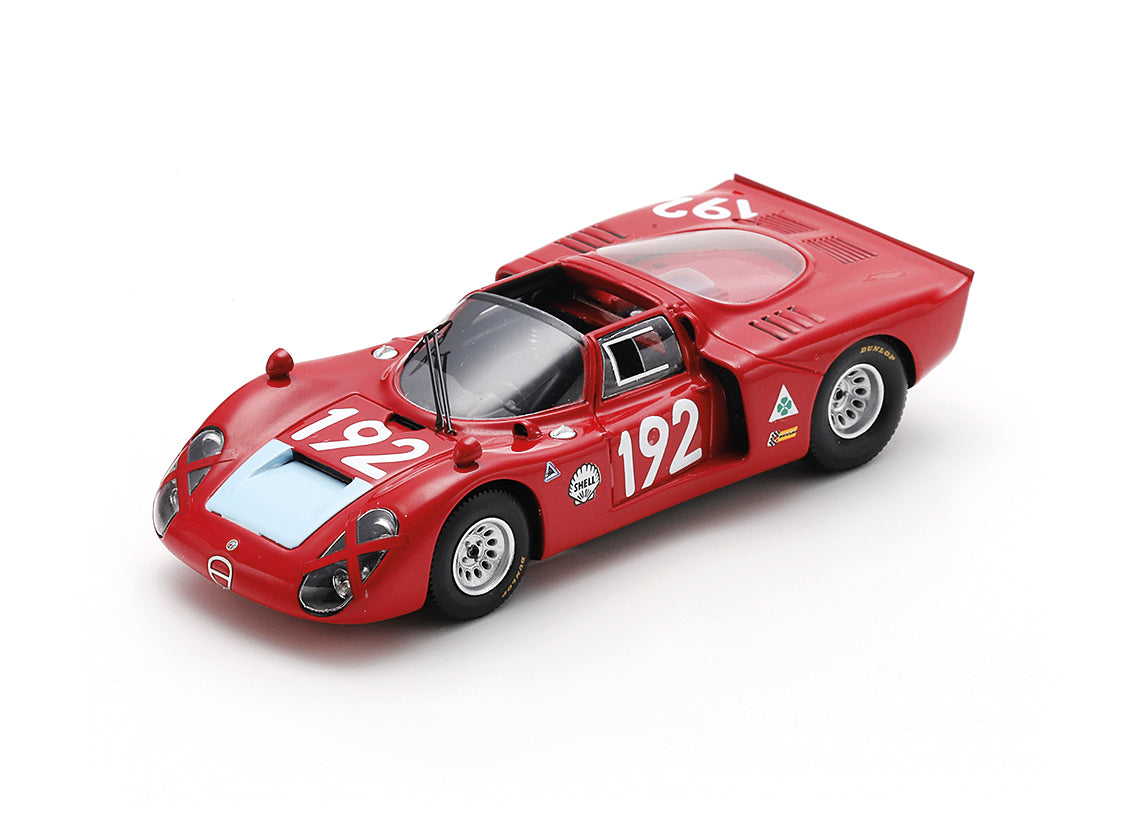Insights into the 1968 Alfa Romeo T33/2 No.192
Engineering Excellence of the Alfa Romeo T33/2
For Alfa Romeo aficionados, the Alfa Romeo T33/2 No.192, driven by the legendary Lucien Bianchi and Mario Casoni to a third-place finish at the 1968 Targa Florio, represents a pinnacle of 1960s motorsport engineering. This model, crafted under Autodelta’s meticulous oversight, featured a refined 2.0L V8 engine delivering around 270 bhp, paired with an aerodynamic body that balanced speed and stability on the rugged Sicilian terrain. Enthusiasts will appreciate the car’s evolution from the original T33, with its monocoque chassis and improved suspension, showcasing Alfa’s commitment to innovation during a fiercely competitive era dominated by Porsche’s 907s.
Triumph at the 1968 Targa Florio
The Targa Florio 1968 was a testament to the T33/2’s reliability and driver skill, with Bianchi and Casoni navigating the 72-lap, 720 km course to secure a podium finish behind teammates Galli and Giunti. Collectors will note the car’s distinctive No.192 livery, a nod to its Autodelta heritage, and its role in Alfa’s class victories at Monza and Nürburgring that season. This replica offers a tangible connection to that gritty race, where strategic pit stops and tire management were as crucial as raw power, making it a must-have for those who revel in the technical and historical depth of classic endurance racing.
A Legacy of Italian Motorsport Innovation
For the purist, this model’s appeal lies in its representation of a transitional period for Alfa Romeo, bridging the unreliable early T33s to the later T33/3’s success. The T33/2’s performance at Spa and its Targa Florio result highlight its underdog spirit, often overshadowed by Porsche but beloved for its Italian flair. Whether displayed alongside other 1968 racers or studied for its engineering nuances, this piece invites enthusiasts to relive a golden age of motorsport where every curve of the Targa Florio track tested man and machine to their limits.


